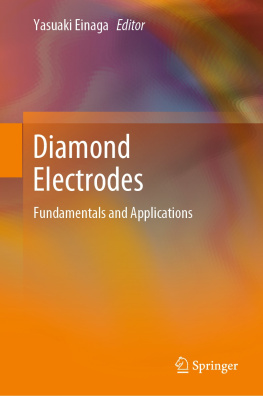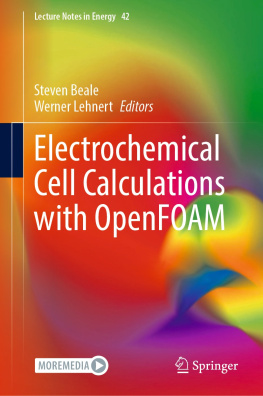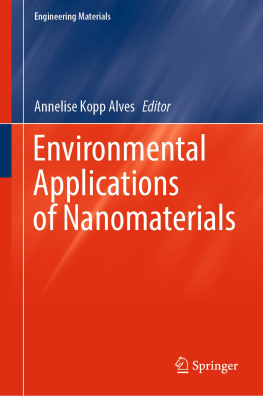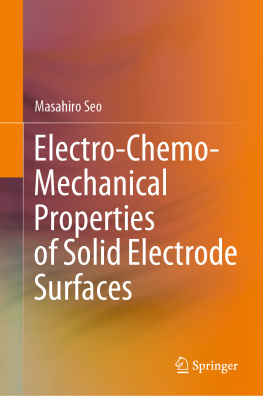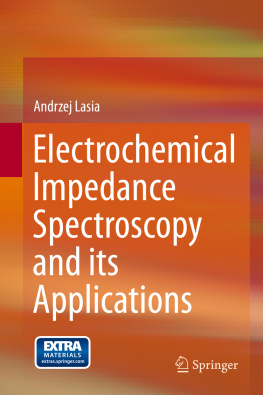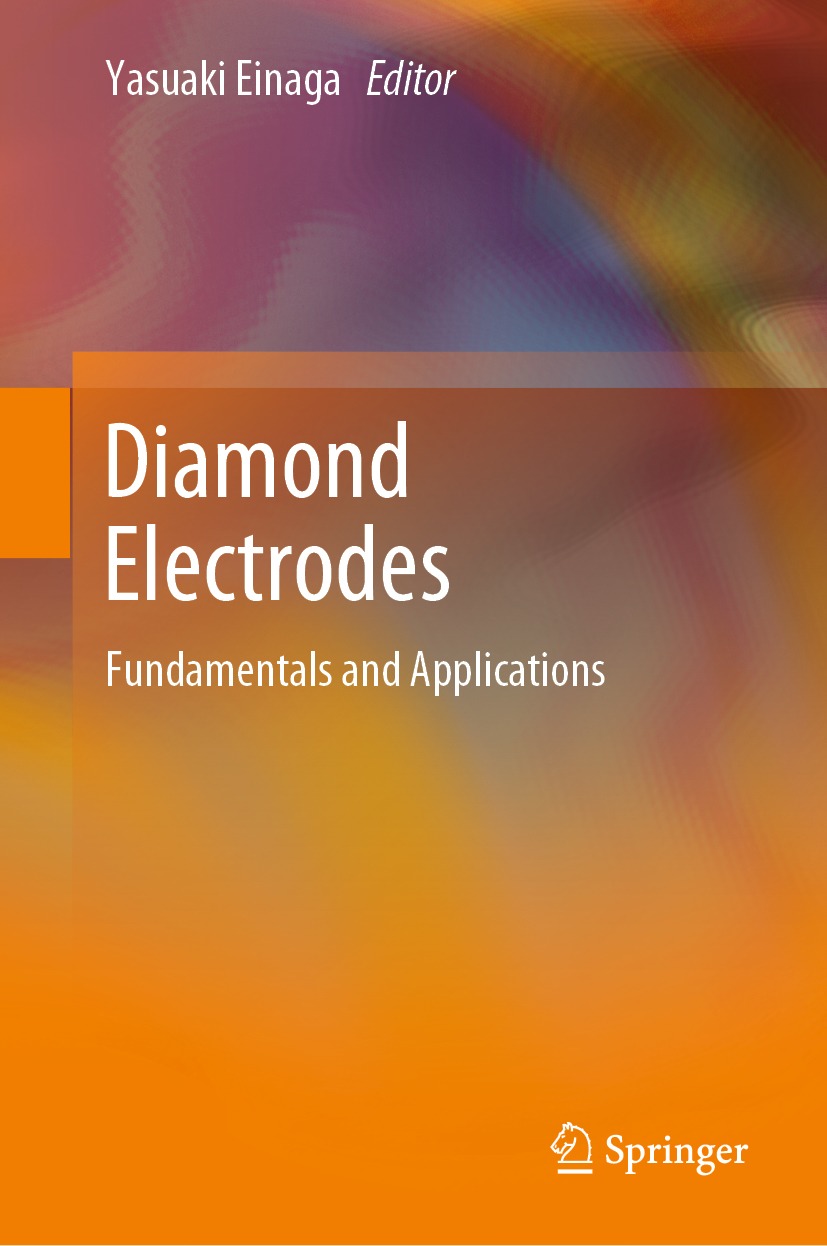Editor
Yasuaki Einaga
Department of Chemistry, Keio University, Yokohama, Kanagawa, Japan
ISBN 978-981-16-7833-2 e-ISBN 978-981-16-7834-9
https://doi.org/10.1007/978-981-16-7834-9
Springer Nature Singapore Pte Ltd. 2022
This work is subject to copyright. All rights are reserved by the Publisher, whether the whole or part of the material is concerned, specifically the rights of translation, reprinting, reuse of illustrations, recitation, broadcasting, reproduction on microfilms or in any other physical way, and transmission or information storage and retrieval, electronic adaptation, computer software, or by similar or dissimilar methodology now known or hereafter developed.
The use of general descriptive names, registered names, trademarks, service marks, etc. in this publication does not imply, even in the absence of a specific statement, that such names are exempt from the relevant protective laws and regulations and therefore free for general use.
The publisher, the authors and the editors are safe to assume that the advice and information in this book are believed to be true and accurate at the date of publication. Neither the publisher nor the authors or the editors give a warranty, expressed or implied, with respect to the material contained herein or for any errors or omissions that may have been made. The publisher remains neutral with regard to jurisdictional claims in published maps and institutional affiliations.
This Springer imprint is published by the registered company Springer Nature Singapore Pte Ltd.
The registered company address is: 152 Beach Road, #21-01/04 Gateway East, Singapore 189721, Singapore
Preface
The application development of utilizing diamond as a chemical electrode has made rapid progress in both fundamental physical properties and application development in the last 1020 years. In particular, this diamond electrode was mainly used for waste water treatment and purification in the early years for environmental improvement, but in these days, this is utilized for electrochemical analysis and sensors such as environmental monitoring and biomedical measurement. Then, it has been found that the application range is extremely diverse, including as an electrode for ozone generation, an electrode for synthesizing organic compounds that lead to drug discovery, and an electrode for synthesizing useful chemicals by CO2 reduction, etc. In that sense, it is becoming more attractive than before. On the other hand, the diamond electrode that contributes to such applications exhibits superior electrochemical properties that are unique compared to conventional electrode materials, so the fundamental studies on physical properties of the electrode interface and the correlation between physical properties and electrochemical properties are attracting increasing attention.
In particular, since 2011, national projects for Strategic Basic research Programs on diamond electrodes (CREST (20112015) and ACCEL (20142020)), whose director is Prof. Yasuaki Einaga, have been adopted by Japan Science and Technology Agency (JST). Then, we could accelerate the diamond electrodes research with relevant active researchers. In the meantime, although research activity on diamond electrodes has been increasing year by year worldwide, this book especially focuses on the attractive development of diamond electrodes on fundamentals and applications in Japan related to these national projects.
In , Matsubara et al. discussed the application of influenza virus detection.
Lastly, I would very much like to acknowledge Prof. Akira Fujishima (Distinguished Professor, Tokyo University of Science), who is my supervisor and led me to this research area of diamond electrochemistry. Furthermore, I would like to thank Prof. Kohei Tamao (Research supervisor of JST-CREST) and Prof. Yoichiro Matsumoto (Chair, R&D Management Committee of JST-ACCEL and President of Tokyo University of Science) for giving us a chance to accelerate the researches on diamond electrochemistry. Finally, I would like to thank all the authors for their efforts and great contributions.
Yasuaki Einaga
Yokohama, Japan
Contents
Yasuaki Einaga
Yasuaki Einaga , Seiji Kasahara and Keisuke Natsui
Francesca Celine I. Catalan and Yousoo Kim
Yasufumi Takahashi , Makarova Marina , Tomohiro Ando and Takeshi Fukuma
Yoshitaka Tateyama , Zdenek Futera , Yusuke Ootani , Shota Iizuka and Le The Anh
Takeshi Kondo
Takeshi Kondo
Irkham , Andrea Fiorani and Yasuaki Einaga
Kazuya Nakata and Chiaki Terashima
Mai Tomisaki and Yasuaki Einaga
Takashi Yamamoto and Tsuyoshi Saitoh
Yasuaki Einaga
Prastika K. Jiwanti , Shafrizal R. Atriardi , Yulia M. T. A. Putri , Tribidasari A. Ivandini and Yasuaki Einaga
Genki Ogata , Seishiro Sawamura , Kai Asai , Hiroyuki Kusuhara , Yasuaki Einaga and Hiroshi Hibino
Teruhiko Matsubara and Toshinori Sato

